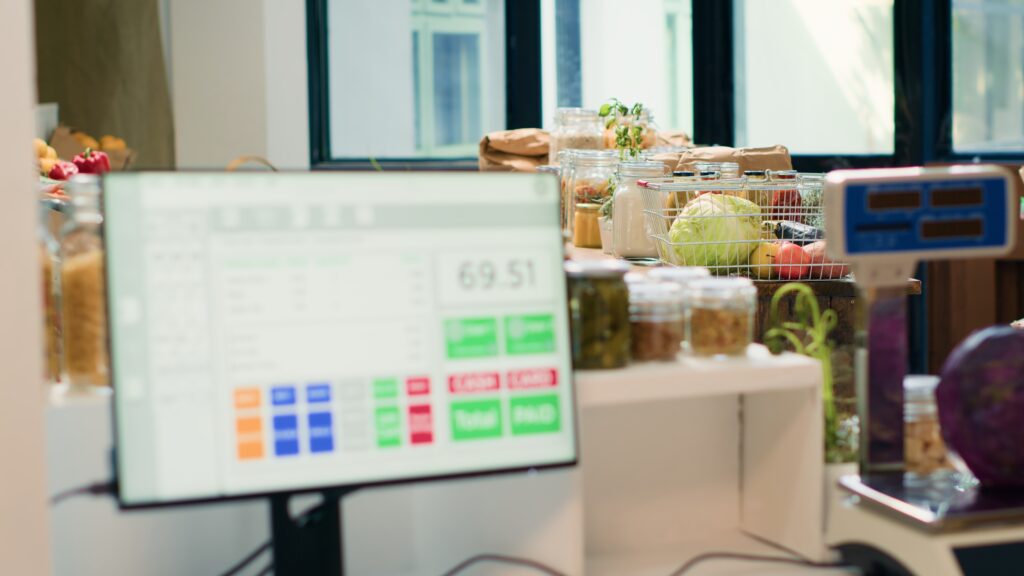Restaurant Inventory Management

Restaurant POS System Inventory Management: How Do Restaurants Do Inventory?
Restaurant POS Systems play a vital role in helping restaurants streamline inventory management, reduce waste, and improve profits. Running a restaurant is no easy task. From managing staff to ensuring customer satisfaction, restaurant owners juggle countless responsibilities. Among these, inventory management is one of the most critical yet challenging aspects. Without proper control, food waste, stock shortages, and high costs can quickly eat into profits. This is where restaurant POS systems play a transformative role, helping businesses streamline how they track and manage inventory.
Why Restaurant Inventory Management Matters
Inventory management is more than just counting ingredients in the kitchen. It ensures that restaurants have enough supplies to meet customer demand without overstocking, which can lead to food spoilage. Poor inventory management results in wasted resources, lost money, and unhappy customers. By using modern restaurant POS systems, owners can track every ingredient, monitor real-time usage, and make data-driven decisions to improve efficiency.
Traditional Methods vs. Modern Solutions
In the past, restaurant managers relied on manual methods like spreadsheets or pen-and-paper logs. While this worked for smaller establishments, it became prone to errors, time-consuming, and difficult to scale. Modern restaurants, especially those in competitive markets, now rely on restaurant POS systems that automate inventory tracking. These systems not only save time but also provide accurate insights into sales and stock levels, ensuring no item is wasted or oversold.
How Do Restaurants Do Inventory Today?
Most restaurants follow a step-by-step process when it comes to inventory:
Regular Stock Counts – Managers or staff count ingredients weekly or daily, depending on restaurant size.
Usage Tracking – By comparing stock before and after shifts, they identify what was used.
Ordering Supplies – Based on sales trends, managers reorder stock from vendors.
Cost Control – They calculate food costs versus revenue to measure profitability.
With restaurant POS systems, these steps are simplified. Instead of manual checks, the system tracks every sale and deducts ingredients automatically, giving managers real-time reports on stock levels.
Benefits of Restaurant POS Systems in Inventory Management
1. Real-Time Tracking
A restaurant POS system automatically updates stock levels every time an order is placed, giving managers live data.
2. Reduced Waste
By monitoring what sells and what doesn’t, restaurants can adjust their purchasing, reducing food spoilage.
3. Cost Efficiency
Accurate tracking prevents over-ordering, helping businesses save money on ingredients.
4. Integration with Vendors
Some advanced restaurant POS systems even connect directly with suppliers, allowing seamless reordering when stock runs low.
5. Data-Driven Insights
With detailed reports, managers can identify best-selling items, seasonal demand, and customer preferences.
Best Practices for Restaurant Inventory Management
To make the most of your restaurant POS system, here are a few practices to follow:
Set Par Levels: Define minimum stock levels to avoid shortages.
Use FIFO (First In, First Out): Rotate ingredients so older stock is used before newer ones.
Schedule Regular Audits: Even with automation, manual checks ensure accuracy.
Train Staff: Ensure employees know how to use the POS system effectively.
By combining these strategies with modern technology, restaurants can improve profitability while delivering consistent customer satisfaction.
Choosing the Right Restaurant POS System
Not all POS systems are created equal. When selecting one for inventory management, look for features like:
Ingredient-level tracking
Sales-to-inventory integration
Vendor management
Cloud-based reporting
Easy-to-use dashboards
Investing in the right restaurant POS system can transform how your restaurant operates, freeing up time for staff and reducing costly mistakes.
Effective inventory management is the backbone of a successful restaurant. While traditional methods may still work for some, the future clearly lies in automation and technology. Restaurant POS systems not only simplify inventory tracking but also provide valuable insights that drive smarter business decisions. By adopting these systems, restaurants can cut costs, reduce waste, and maximize profitability all while keeping customers happy and satisfied.
